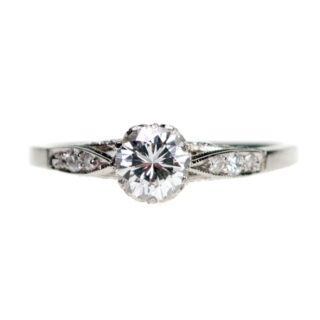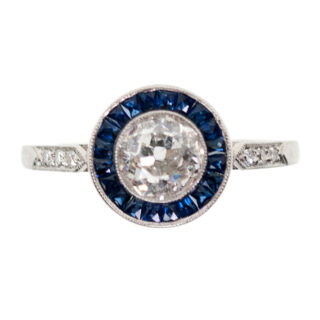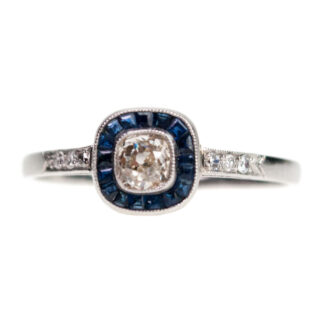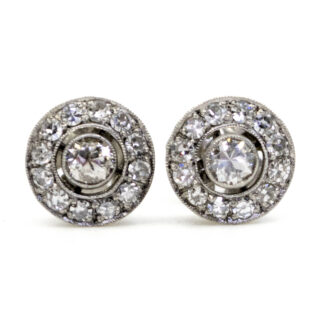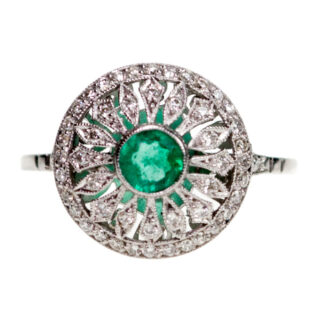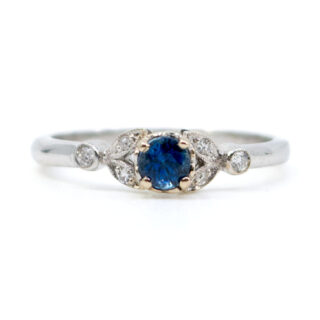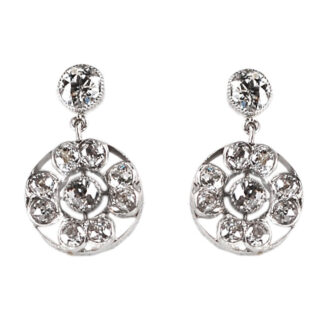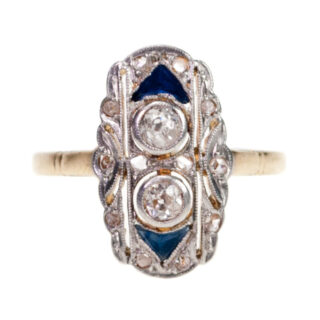This beautiful Contemporary pendant has a round-shaped ±0.60ct Garnet as the centerpiece, surrounded by ±0.05ct Brilliant-Cut Diamonds with a clarity rating of SI1 and a color grade of H. The pendant is elegantly crafted in a two-tone yellow and white 14k gold.
Details: ±0.60ct Garnet, ±0.05ct. (H SI1) Brilliant-cut diamonds, 14k Pendant.
Design Era: Contemporary.
Dimensions: 17 x 10.
Weight in grams: 1.3.
Condition: New.
Shipping and Pickup: This elegant piece ships from our store located in the center of Amsterdam, The Netherlands. We offer both registered shipping and local pickup at our store. In the case of local pickup, any applicable shipping costs will be refunded.
About Us: Add some sparkle to your style with Binenbaum.com. We offer a stunning selection of antique and vintage jewelry that you won’t find anywhere else. From timeless rings and dazzling necklaces to unique brooches, we have something for every taste and occasion. Visit our website today and treat yourself to a piece of history.
| Design Era | |
|---|---|
| Design & Historical Context | Contemporary jewellery is a type of jewellery that reflects current trends and styles, and is often made from a variety of materials beyond the traditional precious metals and stones. This allows contemporary jewellery to have a more modern and unique appearance compared to classic jewellery. To create contemporary jewellery, it is necessary to have both specialized training and a deep understanding of the subject. The contemporary style combines historical techniques and artistic expression with innovative ideas and materials, giving it a distinct personality that falls between fashionable mass-produced jewellery and traditional artisanal works of art. |
| Key Materials | |
| Materials & Craftsmanship | Garnet Garnets, with their wide range of colors and varieties, have long been an important gem material throughout history with research dating their use back to the earliest known civilisations. The name garnet is derived from the Latin word granatas, meaning grain or seed. Historically the red varieties of this gemstone, which resemble the seeds of a pomegranate in color, were referred to as garnets. The term garnet has come to refer to the whole family of minerals that crystallize in the cubic system and share the same chemical blueprint. Brilliant-cut diamond The round brilliant cut is a type of diamond cut that was developed in the early 1900s and is now the most popular and widely used diamond cut. It is characterized by a circular girdle and 58 facets, which are small, flat surfaces that are cut into the diamond to create a specific shape and enhance its sparkle and brilliance. Unlike the old European cut, the round brilliant cut does not have a culet (the bottom edge of the diamond). The round brilliant cut was designed to maximize the fire and brilliance of a diamond, and it has become the standard cut for diamonds. It is known for its bright, sparkling appearance and is often used in engagement rings and other high-end jewelry. The round brilliant cut became prevalent during the Art Deco and Retro periods and is still widely used today. Round brilliant cut diamonds are typically more expensive than diamonds with other cuts because they require more labor and material to produce. However, they are considered the highest quality and most desirable type of diamond cut, and they are a popular choice for those who want the highest level of sparkle and brilliance in their jewelry. 14k 14k gold is a popular choice for use in jewelry because it is durable, yet still relatively affordable compared to higher karat golds like 18k or 24k. It is made up of 58.5% pure gold and is mixed with other metals to make it harder and more durable. 14k gold is available in a range of colors, including yellow, white, and rose, and is commonly used in a variety of jewelry pieces such as rings, earrings, necklaces, and bracelets. One of the advantages of 14k gold is that it is more resistant to wear and tear than pure gold, which makes it suitable for everyday wear. However, it is still softer than other alloys such as stainless steel or platinum, so it may require more maintenance to keep it looking its best. Overall, 14k gold is a popular choice for those who want the look and feel of gold, but at a more affordable price point. |
| Dimensions | 17 x 10 |
| Gender | |
| Weight (in grams) | 1.3 |
| Condition |
Enhance the Beauty of Your Jewelry with Proper Care
Wearing your jewelry is a special way to express yourself and add a touch of personal style to any look. However, to ensure your jewelry remains in pristine condition, there are a few simple steps you need to take to keep it looking its best.
General Care Instructions:
Remove jewelry when showering or bathing, especially when at the beach, in the sea or in chlorinated water.
Avoid wearing jewelry while doing physical work such as housekeeping, gardening or exercise.
Storing your jewelry in a dry and cool place will help protect it from moisture, dirt and dust.
Keeping it away from harsh chemicals such as bleach, ammonia and chlorine will help to avoid discoloration and damage.
Cleaning your jewelry regularly with a soft cloth will help to keep it looking shiny and new.
Avoid exposing your jewelry to extreme temperatures, such as leaving it in direct sunlight or near a heater, as this can cause damage.
Handle your jewelry carefully and avoid dropping it, as this can cause the stones to loosen or the metals to scratch.
Finally, if possible, have your jewelry professionally checked and serviced. This will ensure that any potential problems are spotted and fixed before they become worse.
By following these tips, you can enjoy your precious jewelry for many years to come.
Related products
-
Diamond Platinum Solitaire Ring 7243-1935
€ 3.995,00 VAT incl. (where applicable) -
Diamond Sapphire Platinum Target Ring 6961-4858
€ 3.995,00 VAT incl. (where applicable) -
Diamond Sapphire Platinum Target Ring 6988-0010
€ 2.295,00 VAT incl. (where applicable) -
Diamond Platinum Cluster Earrings 4977-4675
€ 3.395,00 VAT incl. (where applicable) -
Emerald Diamond Platinum Cluster Ring 6903-4869
€ 2.995,00 VAT incl. (where applicable) -
Sapphire Diamond 18k Ring 5072-4669
€ 1.695,00 VAT incl. (where applicable) -
Diamond Platinum Pendant Earrings 5846-0616
€ 3.595,00 VAT incl. (where applicable) -
Diamond Sapphire 18k Deco Ring 7331-1947
€ 1.595,00 VAT incl. (where applicable)
- Home
- Collection
- Fine Jewelry
- Silver Jewelry
- Silverware
- Boxes
- Candlesticks
- Salt and pepper shakers
- Miniatures
- Salt cellars
- Spoon Set
- Condiments
- Frames
- Napkin Ring
- Spoon
- Oddities
- Cups
- Vases
- Cutlery
- Serving Spoon And Cake Server
- Candlesticks
- Baskets
- Hanukkiah
- Spice Tower
- Yad
- Tea Set
- Sugar Castor
- Napkin Rings
- Wine Bottle Coaster
- Wine Stopper
- Tea Pot
- Jugs
- Rattles
- Hip Flask
- Miscellaneous
- Rings 💍
- About
- Contact




